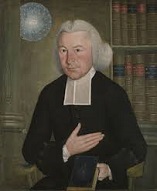



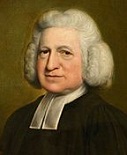
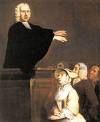


















TLW's Christian Sectscope™ (Christian Sect Historyscope) |
By T.L. Winslow (TLW), the Historyscoper™ |
© Copyright by T.L. Winslow. All Rights Reserved. |
Original Pub. Date: Mar. 8, 2017. Last Update: May 23, 2020. |
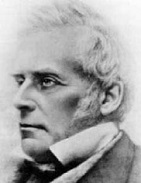
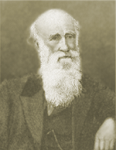
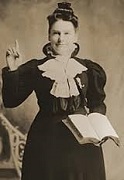


Westerners are not only known as history ignoramuses, but double dumbass history ignoramuses when it comes to Christian sect (denomination) history. Since I'm the one-and-only Historyscoper (tm), let me quickly bring you up to speed before you dive into my Master Historyscope.
Open your case? About 156 C.E. Christian nutcase prophet Montanus (135-177?) of Phrygia declares himself to be the "Spirit of Truth" (the personification of the Holy Spirit in the Gospel of John), and gathers a bunch of followers, incl. Prisca (Priescilla) and Maximilla, a pair of "prophetesses", who have holy visions and ecstasies from Lesbos, er, God, and begin preaching the "Third Testament" and the "New Jerusalem", which will descend from heaven to Montanus' home town of Pepuza, WC Phrygia, causing true blue believers to flock there; Carthage-born Berber Tertullian (Quintus Septimius Florens Tertullianus) (155-240 becomes a convert, going on to become the first Christian to produce a large corpus of Latin Christian lit. and defend against heresies incl. Gnosticism, becoming known as "the father of Latin Christianity".
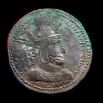

In Feb. 242 C.E. Ardashir I dies, and his son Shapur (Sapor) (Shabuhr) I tyhe Great (-270) succeeds him as king of Persia, (until May 270) demanding all Roman territories in Asia and invading Mesopotamia and Syria, beginning the Second Roman-Persian War (end 244); at his accession his gay bud, er, companion Mani ("the Illustrious") (216-77) (founder of Manichaeism) begins his public preaching in Seleucia-Ctesiphon, teaching a rigid dualism that claims to surpass the teachings of Christianity, Buddhism, and Zoroastrianism, claiming to be the Paraclete and Last Prophet, also an apostle of Jesus Christ, revering his mother Mary.

In 378 C.E. Epiphanius of Salmis (310-403), The Panarion (Gr. "medicine chest") (AKA Adversus Haereses or Against the Heresies); "a stock of remedies to offset the poisons of heresy", refuting 80 religious sects from the time of Adam.
In 1173 the Waldensians (Waldenses) (Vallenses) (Valdesi) (Vaudois) (originally the Poor Men of Lyons/Poverty/God) are founded by by wealthy merchant Peter Waldo (Valdo) (Valdes) (Waides) (Pierre Vaudes or de Vaus) (1140-1205) in Lyons, France, who takes the Bible passage "No man can serve two masters, God and Mammon" (Luke ch. 16) literally and gives away his property and preaches apostolic poverty as the way to perfection, condemning papal corruption and luxury along with Roman Catholic dogmas incl. Purgatory and Transubstation, accusing the Church of being the Harlot in the Book of Revelation ch. 17, disguising themselves as peddlers to spread their teachings and quickly spreading through the Cottian Alps, becoming the first to translate the New Testament into vernacular (Arpitan); in 1184 after visiting Pope Alexander III and the Roman Curia in 1179 to explain his fath, Waldo is excommunicated by Pope Lucius III in the Synod of Verona, and in 1215 the Fourth Lateran Council declares them heretical and begins persecuting them, causing them to flee to the mountains of N Italy; in the 16th cent. they merge into the Protestant Reformation.



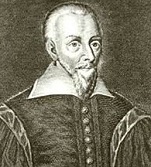
In 1531 freethinking Spanish physician Michael Servetus (1511-53) pub. On the Errors of the Trinity, containing the soundbytes: "In the Bible there is no mention of the Trinity... We get to know God, not through our proud philosophical concepts, but through Christ"; "How much this tradition of Trinity has alas, alas! been the laughing stock of Mohammedans only God knows. The Jews also shrink from giving adherence to this fancy of ours, and laugh at our foolishness about the Trinity, and on account of its blasphemies, they do not believe that this is the Messiah promised in their Law. And not only the Mohammedans and the Hebrews, but the very beasts of the field, would make fun of us, did they grasp our fantastic notion, for all the workers of the Lord bless the One God. This most burning plague, therefore, was added and superimposed, as it were, on the new gods which have recently come, which our fathers did not worship. And this plague of philosophy was brought upon us by the Greeks, for they above all men are most given to philosophy; and we, hanging upon their lips, have become philosophers, and they never understood the passages of the Scriptures which they adduced with regard to this matter"; too bad, he makes himself a target for the Catholic Inquisition and Protestants both. In 1540 after being forced to flee to Paris and change his name to Villanovus, Servetus discovers the Pulmonary Circulation of the Blood. On Oct. 27, 1553 French-born Protestant leader John (Jehan) Calvin (1509-64) of Geneva Switzerland, founder of Calvinism, known for the doctrine of Predestination burns his theological enemy, Unitarian (non-Trinitarian) Catalan scholar Michael Servetus (b. 1511) (who was captured while fleeing to his protection after escaping a prison of the Spanish Inquisition) in Geneva, executioner Guillaume Farel warning the audience: "(Servetus) is a wise man who doubtless thought he was teaching the truth, but he fell into the hands of the Devil... Be careful the same thing doesn't happen to you"; liberals lose their illusions about Bible-thumpers ever lightening up anything but a faggot, and a corner is turned in the fight for freedom of conscience? at his trial Servetus is ridiculed for describing Palestine as a sparse, sterile land when the Bible says it's the land of milk and honey; noted noble Paris-educated French Protestant ex-humanist poet Theodore Beza (1519-1605) backs Calvin up, as does #1 learned scholar of the age Sebastian Castellion (Catellio) (Chateillon) (Chataillon) (Castello) (1515-63), who in May 1554 pub. the pamphlet "Should Heretics Be Persecuted?" under the alias Martinus Bellius, containing the soundbyte: "When Servetus fought with reasons and writings, he should have been repulsed by reasons and writings", and throws Calvin's words back at him when he was being persecuted by the Roman Catholic Church: ""It is unchristian to use arms against those who have been expelled from the Church, and to deny them rights common to all mankind", ending with an argument for separation of church and state, with the soundbyte: "We can live together peacefully only when we control our intolerance. Even though there will always be differences of opinion from time to time, we can at any rate come to general understandings, can love one another, and can enter the bonds of peace, pending the day when we shall attain unity of faith" - I look bad, feel bad, which is most important?
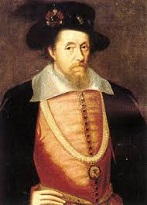
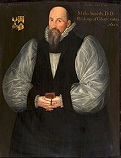
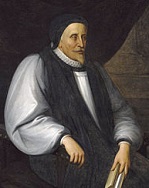
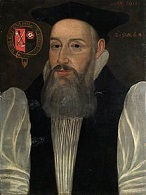
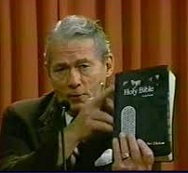
In 1611 C.E. English King (1603-25) James I (1566-1625) (ed.) pub. the King James (Authorized) Version of the Holy Bible (66 books), commissioned in 1604 (lucky that the 1605 Guy Fawkes Plot to replace the govt. with Roman Catholics didn't succeed), with the work divided between 47 translators (47 Anglicans, 0 Puritans, 0 Roman Catholics, 0 Separatists) in six committees with 15 rules to follow, using ancient mss. for reliability, and deliberately preserving ambiguities, e.g. Romans 5:12: "Wherefore, as by one man sin entered into the world, and death by sin; and so death passed upon all men, for that all have sinned" (can mean that all men die because of sin, and/or that all men sin because they are under God's judgment of death); most of the language is William Tyndale's, but without the pesky marginal notes challenging the divine right of kings; James I's planned royal authorization of the final work never happens?; the intent is to make "of many good translations one principal good one", according to translator Miles Smith (1554-1624) in Preface to the Translation; it takes its place beside the Bishops' Bible (official vers. for use in Anglican churches, original ed. 1568, revised ed. 1602) (basic source for the King James Bible?), the Geneva Bible (1575) (known for Calvinist-slanted footnotes dissing the divine right of kings, always translating the word king as tyrant), and the 1582 Rheims trans. of the 5th cent. Roman Catholic Vulgate; too bad, the King James Bible is initially universally panned, and the Puritans continue to use the Geneva Bible, causing Charles I to ban it in 1644, leading to the Puritans taking over the govt. and beheading him in 1649, later realizing the superiority of the KJV; translator Lancelot Andrewes (1555-1626), master of Pembroke College, Cambridge U. is appointed bishop of Winchester in 1619, becoming the mentor of Reformed Roman Catholicism in the post-Reformation Anglican Church, and the translator of the 23rd Psalm; Thomas Bilson (1547-1616), bishop of Winchester oversees the final edit and printing; the notes on the trans. process are stored in Whitehall, and are destroyed in the 1598 Whitehall Fire; in modern times the Ruckmanists (Ruckmanites), founded by Am. Baptist pastor Peter Sturges Ruckman (1921-2016) claim special divine inspiration for the translators, even though they were govt. employees told what to do by the hardly saintly king, and explicitly deny special inspiration; a case of disguised Am. WASP racism?; Psalm 46 features word 46 from the beginning "shake" and word 46 from the end "spear", and of course William Shakespeare (b. 1564) is 46 the first part of this year; a tribute, or did he translate it? - it's a pajama people special?
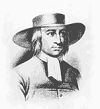
In 1647 after having a vision on rainy Pendle Hill in Lancashire, claiming that "the Lord let me see in what places he had a great people to be gathered", leaving his hometown of Drayton-in-the-Clay in Sept. 1643 to travel through civil war-filled England, learning to listen to his "inner light" and reject rituals, church buildings, and age-sex qualifications for the religious ministry (giving the right to women and children), Leicestershire, England-born Puritan George Fox (1624-91) begins to speak publicly, founding the Religious Society of Friends (Quakers), who believe it possible to have a direct experience of Christ without the need for clergy, making fans of William Penn and Oliver Cromwell. In Oct. 1650 defiant English preacher (Leicestershire cobbler) George Fox (1624-91) from Fenny Drayton in the Midlands, who got fed up with all the religious hypocrisy and began wandering and preaching, only to be arrested for it, thunders from the dock in court on a charge of illegal preaching that it was not he but the judge Gervase Bennett (1612-) who should "tremble at the word of the Lord"; the latter replies that the only "quaker" in court is Fox himself, and the name Quakers sticks; by 1680 membership in England and Wales reaches 60K (1.5% of the pop.).

On Apr. 18, 1661 Boston, Mass.-born Congregationalist preacher Rev. Solomon Stoddard (1643-1729) proposes the Half-Way Covenant in the Northampton Church (pastor Eleazar Mather) no longer requiring a spiritual conversion to receive communion as long as their behavior is not scandalous, thinking that it would meet the need of 2nd gen. pilgrims more interested in secular than spiritual life; in 1669 Mather dies, and Stoddard takes over; too bad, his half-way proposal fails to increase the congregations, but in 1690 he abolishes the public profession of faith, and makes the Lord's Supper a converting ordinance, causing the congregation to double from 500 to 1,000 in 20 years; in 1725 he hires his grandson Jonathan Edward as his asst., who later repudiates his views and launches the Great Awakening of 1735-45.
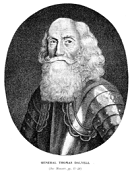
A Pentacle rising plus 666 = ? On Nov. 15, 1666 the Pentland Rising in the Pentland Hills of Lothian, N Scotland led by 900 die-hard Scottish Presbyterian Covenanters begins; on Nov. 2.6K die-hard Charles II supporters of the Scottish Royal Army led by Gen. Sir Thoms "Bloody Tam" Dalyell of the Binns, 1st Baronet (1615-85), "the Muscovite Devil" responds with a massacre at Rullion Green, killing 50+; Presbyterians are ruthlessly suppressed by court order beginning in Dec., and all legislation favoring Presbyterianism is repealed and the episcopacy restored (until 1689).
In 1730 Scottish clergyman John Glas (1695-1773) founds the Glasite (Glassite) (Sandemanian) Sect, which is spread by his son-in-law Robert Sanderman (1718-71) in England and Am.; "The bare death of Jesus Christ without a thought or deed on the part of man, is sufficient to present the chief of sinners spotless before God", i.e., all one has to do is assent to the divine testimony concerning Jesus to be saved - are we clear? Crystal?


About 1730 English Bible-thumping brothers John Wesley (1703-91) (of Lincoln College) and Charles Wesley (1707-88) (of Christ Church) found the Protestant sect of Methodism at Oxford U. in England, turning the taunts of fellow students into their name; their views are soon taken up by "Calvinistic Methodist" George Whitefield, and spreads to the U.S. and other countries via outdoor preaching, reaching 80M followers by modern times; their theology focuses on sanctification and the effect of faith on character (people are dead in sin by nature, hence children of wrath, and are justified by faith alone, with the love of God reigning supreme in their hearts, giving them outward holiness and allowing them to experience Jesus Christ personally), with the main doctrines incl. the primacy of Scripture, assurance of salvation, imparted righteusness, the possibility of perfection in love, and works of piety, clinging to the Arminian doctrine that salvation is available to all and rejecting the Calvinist doctrine that God has pre-ordained a select group of people to be saved, becoming popular with the worknng class and black Am. slaves; Methodists go on to engage in charitable work for the sick and poor, and to get deep into music and hymns.


In 1735 Bishop August Gottlieb Spangenberg (1704-92) of Herrnhut, Germany founds the Moravian Church in the North Am. colony of Georgia on the estate of George Whitefield, then after they refuse to fight against the Spanish and get evicted in 1739 make like gone with the wind and move to Philadelphia, Penn. on Whitefield's sloop; meanwhile in Ga. the sale of alcoholic spirits is prohibited (until 1742), and slavery is abolished until 1749 when rice cultivation arrives; meanwhile Count Nikolaus (Nicolaus) Ludwig von Zinzendorf und Pottendorf (1700-60) attempts to stay in Saxony, being ordained as a Lutheran minister in 1734, but the orthodox Lutherans get him banished in 1736 (until 1748), causing him to travel founding new congregations in the Netherlands, England, Ireland, Germany, Estonia, Livonia, and Penn.

In 1735 Scottish-born Presbyterian Church of Ireland revivalist William Tennent (1673-1746) sets up the Log College in Neshaminy, Penn., which turns out more of the same, incl. his son Gilbert, who becomes the leader of the New Light Schism (1741), and eventually helps raise funds for the College of New Jersey (Princeton).
In 1735 Jonathan Edwards discovers religious brainwashing techniques during a religious crusade in Northampton, Mass.; "Our people do not so much need to have their heads stored as to have their hearts touched."


In 1736 tall handsome cross-eyed Oxford-educated English Methodist preacher George Whitefield (1714-70) (pr. WHIT-field) begins preaching in England at age 22, wowing huge crowds with a booming voice that doesn't need to be raised even in front of a crowd of 30K; actor David Garrick ("the George Whitefield of the stage") claims he'd pay a thousand pounds to be able to say the word "oh" as good as him; his mere pronouncing of the word "Mesopotamia" causes women to weep?; his sermons are all based on the text "be born again" (John 3:3). Some things you just can't copy, except your own birth? Born once, die twice, born twice, die once? In spring 1738 Oxford-educated itinerant evangelist George Whitefield visits British Am., starting in Ga., where he converts Anglican priests John Wesley and Charles Wesley, both of whom have religious experiences on May 24; in Dec. Whitefield launches the First Great Awakening in Mass. (ends 1755), reaching 10M listeners via 18K sermons after becoming the first speaker to speak in all 13 Am. colonies; his disciple Jonathan Edwards (1703-58) stages a mini spiritual awakening in Northampton, Mass. this year and next.
In the 1740s the Old Lights and New Lights split over the emotionalism of the Great Awakening rivals, with 200+ congregations splitting to found their own New Light churches; in 1741 the Presbyterian New Lights split, founding their own colleges incl. Nassau Hall in Princeton, N.J.

On hot-hot-hot July 8, 1741 the Great Awakening reaches a peak as Jonathan Edwards (1703-58) delivers his Sinners in the Hands of an Angry God speech in Enfield, Mass., featuring lurid word pictures of Da Judge Bible God Jehovah, who "holds you over the pit of Hell, much as one holds a spider, or some loathsome insect, over the fire, abhors you, and is dreadfully provoked... He looks upon you as worthy of nothing else, but to be cast into the fire"; the Great Awakening splits New England Puritanism into the "Old Lights" and the "New Lights", who go over to the Baptists, Presbyterians, or Methodists; the Am. colonies are prepared for rev. by the Great Awakening?

On Apr. 6, 1744 (Easter weekend) after turning spiritual in 1741, Stockholm, Sweden-born Emanuel Swedenborg (Swedberg) (1688-1772) has his big spiritual awakening, claiming to be appointed by Jesus Christ to write "The Heavenly Doctrine" to reform Christianity and create a New Church by freely visiting Heaven and Hell to talk with angels and demons; he goes on to pub. 18 works which his Swedenborgian followers believe are divinely-inspired, incl. Heaven and Hell and its Wonders and Hell From Things Heard and Seen (1758), which claims that the last Judgment occurred in 1757.

In 1770 after adopting the teachings of Welsh minister James Relly and getting excommunicated from George Whitefield's congregation, Alton, Hampshire-born John Murray (1741-1815) emigrates from England to Lacey Township, N.J. and begins preaching his Universalist doctrines, serving as a chaplain in the Am. Rev. army and becoming known as "the Father of Am. Universalism".
About 1790 the Second Great Awakening begins in the U.S., ramping up about 1800 and peaking in the 1820s, increasing membership in Baptist and Methodist congregations by millions before fizzling by 1840; in 1817-25 the burned-over district of W. N.Y. between the Erie Canal and the Finger Lakes incl. Palmyra, N.Y. area hosts several camp revival meetings, and 12-y.-o. Joseph Smith Jr. (1805-44) gets religion, attending church classes and reading the Bible, getting interested in Methodism and engaging in religious folk magic with family members incl. parents and maternal grandfather, who report visions and dreams from God; Smith's education never incl. history, philosophy, lit., or science, just the Bible and popular historical moose hockey?; the burned-over district goes on to spawn religious nonconformist sects. incl. Latter Day Saints, Millerites, Adventists, Internat. Bible Students (Jehovah's Witnesses), the table-rapping Fox Sisters, Shakers, and Oneida Society, and social radicals incl. Elizabeth Cady Stanton, the Fourierist utopian Socialist movement, the Skaneateles Community, and Walter Rauschenbusch, leader of the Social Gospel.
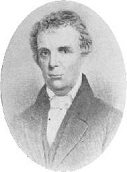
In 1801 the Cane Ridge Revival in Cane Ridge (near Paris), Bourbon County, Ky. (named by Daniel Boone after seeing bamboo growing there) in the Camp Ridge Meeting House (built 1791) (largest 1-room log cabin in North Am.) and attended by 20K is led by 18 Presbyterian ministers and several Methodist and Baptist preachers, esp. Port Tobacco, Md.-born Barton Warren Stone (1772-1844), who in 1804 leaves the Presbyterian Church and founds the Christian Church (Disciples of Christ) (New Lights) (Stoneites) back-to-the-1st-century movement, growing to 12K members by 1830 and forming the backbone of the Restoration Movement.

On Feb. 15, 1805 George (Johann George) Rapp (1757-1847) and his Rappists (Rappites) (Harmonists) (Harmonites) of Iptingen, Germany found the Harmony Society in Butler County, Penn., which soon grows to a pop. of 800 and becomes highly profitable, allowing them to sell it at a 10x profit in 1814 when they move to Indiana - lame white rapper jokes here?
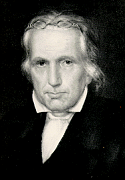

On Sept. 7, 1809 after being infused with the Enlightenment of John Locke at the U. of Glasgow, seeing his Presbyterian credentials suspended before emigrating to the U.S. in 1807, County Down, Ireland-born Scottish Presbyterian minister Thomas Campbell (1763-1854) pub. The Declaration and Address of the Christian Assoc. of Washington in Washington, Penn., which becomes the founding document of the Christian Assoc. of Washington, which seeks to simplify Christianity to a common form that everybody can agree on, based on the Bible alone, with the motto: "Where the Scriptures speak, we speak; and where they are silent, we are silent"; on May 4, 1811 after trying to avoid becoming a church, then being refused fellowship with the Pittsburgh Synod of the Presbyterian Church, it goes congregational, founding the Brush Run Church in Brush Run, Penn., soon going Baptist and joining the Redstone Baptist Association in 1815-24, switching to the Mahoning Baptist Association in 1824; on Jan. 1, 1830 after rejecting the name "Christian Baptist", his County Antrim, Ireland-born son Alexander Campbell (1788-1866) founds The Millennial Harbinger mag. in Bethany, W. Va. (until 1870), claiming to help readers handle the approaching Millenium, founding the Restoration Movement (Campbellism), which seeks "the unification of all Christians in a single body patterned after the church of the New Testament"; on Mar. 2, 1840 the Va. legislature charters Bethany College in Bethany, Va. (modern-day W. Va.), with Alexander Campbell as pres. #1, becoming the oldest higher ed. institution in W. Va., becoming the birthplace of the Delta Tau Delta fraternity; meanwhile in 1832 the Campbellites and Stoneites join in fellowship with a handshake, becoming known as the Stone-Campbell Movement and calling themselves the Church (Disciples) of Christ.
In 1812 Presbyterian Princeton Theological Seminary is founded in Princeton, N.J., becoming known for Bible-thumping Calvinist Princeton Theology; in 1910 they issue a list of five dogmas deemed essential to defend the infallibility of the Bible, incl. inerrancy of scripture, the Virgin Birth of Christ, Christ's atonement for our sins on the cross, Christ's bodily resurrection, and the objective reality of Christ's miracles; the last one is later replaced by the doctrine of premillennialism, that Christ will physically return to Earth in the Second Coming to inaugrate the thousand-year golden age of peace AKA the Millennium; too bad, in 1929 after the theological liberals take over the school, the last Bible-thumping Princeton theologians leave to found Westminster Theological Seminary in Glenside, Penn.

n 1820 the Lutheran Gen. Synod in the U.S. is organized by Samuel Simon Schmucker (1799-1873), and the new "American Lutheranism" begins to move closer to Reformed and Evangelical Christianity.
On May 26, 1825 the Am. Unitarian Assoc. is founded; in 1961 it merges with the Universalist Church of Am. to form the Unitarian Universalist Assoc.

In 1827 the Separation of 1827 sees the Am. Quakers (Society of Friends) split into two hostile factions, the liberal Hicksite Party, led by crusty old abolitionist Elias Hicks (1748-1830), and the conservatives; guess which party liberal abolitionists James Mott and Lucretia Mott go with?

In 1827 After falling from a horse in Oct., the Plymouth (Assemblies of) Brethren (named after Matt. 23:8) Bible-only Christian denomination is founded in Dublin, Ireland by Westminster, London-born John Nelson Darby (1800-82), who popularizes Pre-Tribulation Rapture theology, Dispensationalism, and Futurism, later calling the invention of the telegraph an invention of Cain and a harbinger of Armageddon.


In 1827 Irish-born Alexander Campbell (1788-1866) of Bethany, Va. splits with the Baptists and founds the back-to-the-New-Testament Am. Restoration Movement (Campbellism), becoming the oldest ecumenical movement in the U.S., resulting in the creation of the Churches of Christ, which pub. the Millennial Harbinger (1823-63).
In 1827 the Separation of 1827 sees the Am. Quakers (Society of Friends) split into two hostile factions, the liberal Hicksite Party, led by crusty old abolitionist Elias Hicks (1748-1830), and the conservatives; guess which party liberal abolitionists James Mott and Lucretia Mott go with?

In 1830 Scottish Presbyterian minister Edward Irving (1792-1834), whose Chalcedonian Chapel in London (with 1st cent. Christian doctrines mixed with Roman Catholic rites) has 1K+ members begins preaching that Christ will return in two phases, the first one being a secret rapture before the Antichrist comes, getting accused of heresy in 1833 and forming his Irvingites sect (Holy Catholic and Apostolic Church) before dying prematurely in 1834; his ideas gain a following in the U.S. and England, incl. later the Jehovah's Witnesses.

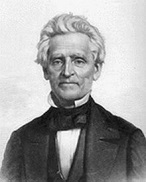


On Dec. 31, 1831 (Sat.) (Jan. 1, 1832?) the Disciples of Christ (Christian Church) is formed at the High St. Meeting House in Lexington, Ky. by a handshake between Port Tobacco, Md.-born Barton Warren Stone (1772-1844) and Sullivan County, Tenn.-born John "Raccoon" Smith (1784-1868) to go back to the Biblical roots, merging the Second Great Awakening Restoration (Stone-Campbell) Religious Reform Movement of County Down, Ireland-born Am. Presbyterian minister Thomas Campbell (1763-1854) and his County Antrim, Ireland-born son Alexander Campbell (1788-1866), composed mainly of Bible-thumping Baptists.
In 1837 U.S. Presbyterians split into old and new school.
On May 18, 1843 the Church of Scotland is disrupted when 457 of its 1.5K ministers sign the Deed of Demission in Edinburgh and form the Free Church of Scotland (the "Wee Free") (until 1900); photographers Robert Adamson (1821-48) and David Octavius Hill (1802-70) begin their careers by photographing the event.

On June 6, 1844 the Young Men's Christian Assoc. (YMCA) is founded in England by draper's shop mgr. Sir George Williams (1821-1905) as a way to get men off the streets and into nice rooms where they can read the Bible and figure out when the Second Coming is going to be; his boss George Hitchcock is one of his first converts; he is knighted in 1894 by Queen Victoria.



When does a fashion statement make a bank statement? On Oct. 24, 1844 the Millerites, followers of Pittsfield, Mass.-born Baptist preacher William Miller (1782-1849) begin to face the Great Disappointment of 1844 when the 2,300 Year-Days of Daniel 8:14 don't jive like they thought, and the world doesn't end with the Second Coming of Christ; never fear, in Dec. Maine-born Ellen Gould White (1827-1915) begins having the first of 2K personal visions, causing the true believers to regroup and form the Seventh-Day Adventists, who claim that Christ didn't make his Second Coming because he entered the Holy of Holies in the Heavenly Sanctuary to begin the Investigative Judgment, and that they should worship on Saturday not pagan Sunday - Sunday didn't work so why not go back to the Jewish sabbath?

On Apr. 26, 1847 after 800 emigrate from Saxony in Nov. 1838 in the Saxon Lutheran Migration, settling in St. Louis, Mo., the Lutheran Church - Missouri Synod (LCMS) is founded by recent German and Scandinavian immigrants in a broad band from Ohio to the Dakotas, led by C.F.W. (Carl Ferdinand Wilhelm) Walther (1811-87),

In 1847 London-born Am. Restorationist John Thomas (1805-71), friend of Restoration Movement founder Alexander Campbell founds the crypto-Anabaptist Unitarian (anti-trinitarian) Christadelphian (Gr. "brethren in Christ") sect in America, claiming to be a return to first cent. apostolic Christianity, going on to promote a nat. homeland for Jews in Israel, claiming that Britain would play a leading role; by modern times there are 50K members in 120 countries.

In 1848 John Humphrey Noyes (1811-86) of Brattleboro, Vt. founds the Oneida Community of Biblical Communist Perfectionists in Putney, Vt.; after being expelled, it settles in Oneida, N.Y. (until 1880); its members believe that Christ has already returned, and that true believers should renounce private property and marriage, although they are permitted "complex marriage", i.e., sleeping around, with conception controlled by the leaders using eugenic principles; the group establishes several successful manufacturing enterprises, which raise their capital from $67K to $600K by 1880, when they are again expelled, and most members quit, marry, and form the joint-stock Oneida Community Ltd., while the remainder move to Canada.
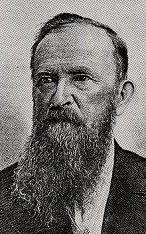
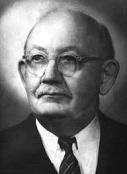
In 1851 the Landmarkist Movement is founded in the Am. South by James Robinson Graves (1820-93) and Benjamin Marcus "Ben" Bogard (1868-1951), reacting to religious progressivism by claiming that the Baptist movement began in Apostolic times, and has continued in unbroken continuity to the present despite massive persecution by the Roman Catholic Church, Lutherans et al.; too bad, in 1859 the Southern Baptist Convention repudiates it, causing a schism by the Am. Baptist Assoc. (1924), Baptist Missionary Assoc. of Am., and the Interstate and Foreign Landmark Missionary Baptist Assoc.; in 1928 Bogard successfully lobbies for an Ark. state law banning the teaching of Darwin's Theory of Evolution in public schools, which is overturned by the U.S. Supreme Court in 1968; in 1931 Ark.-born Tex. Baptist minister James Milton Carroll (1870-1931) pub. the booklet The Trail of Blood: Following the Christians Down through the Centuries; or, The History of Baptist Churches from the Time of Christ, Their Founder, to the Present Day, a bestseller promoting Landmarkism, which is used to modern times.
About 1855 the Third Great Awakening begins in the U.S. (ends 1930), based on the postmillennial belief in the Second Coming of Christ and fueled by the Social Gospel Movement, spawning the Holiness Movement, the Nazarene Movement, Christian Science et al.

In 1859 Westminster, London, England-born evangelist John Nelson Darby (1800-82) (co-founder of the Plymouth Brethren and founder of the Exclusive Brethren) tours the U.S., spreading his Dispensationalist Doctrine, which claims that Jehovah deliberately divided time into periods or ages, each of which is administered in a different way, also Pre-Tribulation Rapture Theology and the Scofield Reference Bible.
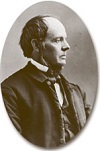
In 1860 the Free Methodist Church of North Am. is founded in Pekin, N.Y. by lay members excluded from the Genesee Conference of the Methodist Episcopal Church who want to restore the historic Wesleyan faith sans slavery, secret societies, and rented pew seats; co-founder Benjamin Titus "B.T. Roberts (1823-93), author of "New School Methodism" becomes its first bishop.



Stay tuned for scenes from one life to live? The year 1874 marks the year in which Christ's Second Presence (Second Advent) is due, according to Allegheny, Penn.-born Pastor Charles Taze Russell (1852-1916), author of the 7-vol. Studies in the Scriptures, 1879 founder of The Watchtower mag., and 1871 founder of the Internat. Bible Students, who in 1931 change their name to Jehovah's Witnesses, and go on to recruit millions of followers, incl. some celebs; when a Bible-based Armageddon prediction goes wrong, there is always a shakeup in the org., after which they regroup and make new predictions, because after all, the Bible is still telling them that there will be one; luckily by the 1980s they officially give up Big A predictions, claiming that only God knows the exact time. In 1884 Charles Taze Russell (1852-1916) et al. form the Bible-thumping Zion's Watch Tower Tract Society, and the Internat. Bible Students, later known as the Jehovah's Witnesses in Pittsburgh, Penn.; Russell, who believes that the Bible and its conflicting, er, moral code are absolute truth, marries beautiful virgin Bible-thumping babe Maria Frances Ackley (1850-1938) in 1879 after er, knowing her a few mo., and they live together in a chaste marriage, with zero sex, leaving them both all the time they want to read their you know whats and plan for eternal life together after Armageddon, when there is plenty of time to, ahem, you know what, and raise children; too bad, she gets ideas that he considers extra-Biblical about women having a role in running the org., and they separate in 1897, after which it gets dirty and she sues for divorce in 1906, using the trial to expose his dirty laundry. On Oct. 31, 1916 Charles Taze Russell (b. 1852) dies in Pampa, Tex., and his org. the Watch Tower Society is taken over by self-proclaimed Mo. "Judge" Joseph Franklin Rutherford (1869-1942), who goes on to mount his "millions living now will never die" campaign, claiming that Armageddon will come in 1925, causing his followers to sell their homes and live in their cars travelling around to spread the urgent message while trying to avoid either marrying or having children; meanwhile the few who only wanted to study the Bible and think for themselves and not be dictated what to believe splinter off into the Bible Students org., which by the end of the cent. only has 10K members vs. 6M for the Jehovah's Witnesses.
In 1876 the Scottish Reformed Presbyterians (formed 1681) unite with the Free Church.
In 1890 the Calvinist "Particular" Baptist Church reuinites with the original "General" Baptist Church to create the Baptist Union.

On Apr. 6, 1906 African-Am. minister William Joseph Seymour (1870-1922) leads the Azusa St. Revival in Los Angeles, Calif., launching the modern Pentecostal movement, known for speaking in tongues, ecstatic trances, etc. which spreads like wildfire among African-Ams. and poor whites, reaching hundreds of groups in 50 countries by 1910, with Seymour announcing that racial integration not the gift of tongues is the decisive sign of the Last Days, with the soudnbyte: "If you get angry or speak evil, or backbite, I care not how many tongues you have, you have not the baptism with the Holy Spirit"; ""God sent this latter rain to gather up all the poor and outcast, and make us liove everybody. God is taking the despised things, the base things, and being glorified in them." (D.W. Myland); no surprise, reason-loving Bible-thumping Christian fundamentalists despise them.
In 1910 the Disciples of Christ found the Council on Christian Unity, becoming the first Christian denomination to found an org. devoted to the pursuit of Christian unity.

In Apr. 1914 the Pentecostal (Holy Roller) Assemblies of God, founded by E.N. Bell, Howard Goss, D.C.O. Opperman et al. hold their first meeting in the opera house in Hot Springs, Ark. after sponsoring revival meetings in the same place last fall by New Lisbon, Ohio-born evangelist Maria Buelah Woodworth-Etter (1844-1924), who goes on to preach to large crowds throughout the U.S., causing the church to grow to 140 autonomous groups with 384K ministers and 67.5M members in 200+ countries by 2016, becoming the world's largest Pentecostal denomination; in 1988 a world fellowship is formed. In 1916 she pub. A Diary of Signs and Wonders.
In 1914 the Oneness (Apostolic) (Jesus' Name) Pentecostalism movement is founded in the U.S., preaching the nontrinitarian doctrine of Oneness, which claims that there is one God who manifests himself in three ways, AKA the ancient heresy of Sabellianism or Patripassianism, breaking with Trinitarianism, which claims that there are three distinct and eternal persons in the Godhead; they claim that to be saved one must repent, be baptized in Jesus' name, and receive the Holy Spirit and prove it by speaking in tongues, after which there is a strict "holiness standard" of dress code and personal conduct; by modern times there are 24M adherents.
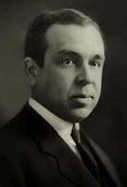
In 1923 Baltimore, Md.-born Presbyterian Greek New Testament scholar John Gresham Machen (1881-1937), leader of the fundamentalist Princeton Theological Seminary (founded 1812) pub. the book Christianity and Liberalism, which disses Protestant liberals as pagans who deny Christianity by denying its core doctrines such as the Virgin Birth, and when they win over most of the Princeton Theological Seminary he leads a walkout, founding Westminster Theological Seminary in Glenside, Penn. in 1929, and the Orthodox Presbyterian Church in 1936; Machen's inaugural address on Sept. 25, 1929 incl. the soundbyte: "We believe, first, that the Christian religion, as set forth in the Confession of Faith of the Presbyterian Church, is true; we believe, second, that the Christian religion welcomes and is capable of scholarly defense; and we believe, third, that the Christian religion should be proclaimed without fear or favor, and in clear opposition to whatever opposes it, whether from within or without the church, as the only way of salvation for lost mankind. On that platform, brethren, we stand. Pray that we may be enabled by God’s grace to stand firm. Pray that the students who go forth from Westminster Theological Seminary may know Christ as their own Savior and may proclaim to others the gospel of his love."
In 1929 the Presbyterian Churches in Scotland unite to form the Church of Scotland, reversing the Disruption of 1843.
In 1945 the United Pentecostal Church Internat. is founded in Hazelwood (near St. Louis), Mo. via the merger of the Pentecostal Church and the Pentecostal Assembles of Jesus Christ, becoming known for Arianism, i.e., denial of the Trinity.

On Sept. 13-21, 1947 Charlotte, N.C.-born Christian evangelist William Franklin "Billy" Graham Jr. (1918-2018) conducts his first crusade in the Civic Auditorium in Grand Rapids, Mich., followed by #2 in Charlotte, N.C. on Nov. 9-23; he goes on to conduct 417 crusades in 185 countries and territories on six continents by 2005, reaching 210M total people.
On Nov. 29, 1950 the Nat. Council of the Churches of Christ in the USA is founded by 25 Protestant and four Eastern Orthodox church groups, reaching 100K local congregations and 40M adherents by 2019.
In the early 1960s the Fourth Great Awakening allegedly begins in the U.S. (ends 1980), seeing mainline Protestant denominations weakening sharply, while the most conservative denominations incl. the Southern Baptists and Missouri Synod Lutherans and evangelical and fundamentalists expand; meanwhile all battle a rise in secularism incl. abortion and gay rights, fighting back with Creationism et al., led by the Southern Baptist Conservative Resurgence.
In 1988 a struggle between moderates and conservatives in the Assoc. of Evangelical Lutheran Churches (AELC) (founded 1976) that has been raging since the 1970s causes the moderates to leave and merge with two other Lutheran groups in the 5.2M-member Evangelical Lutheran Church in Am. (ELCA) next Jan. 1, leaving the 2.6M-member Lutheran Conservative Missouri Synod (LCMS), and the 400K-member Wisc. Evangelical Lutheran Synod (WELS) for the conservatives.